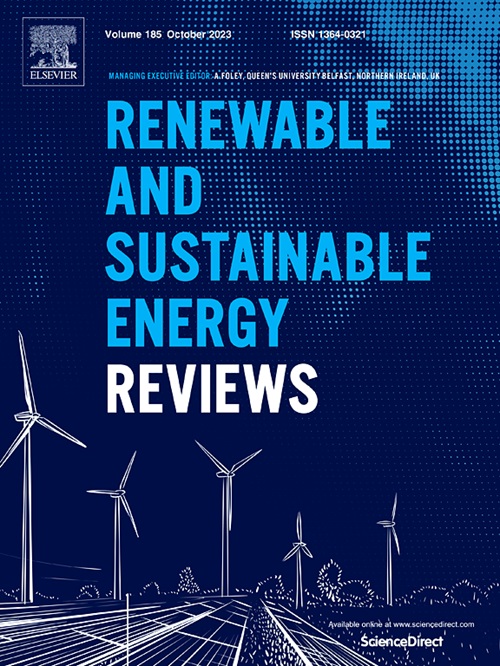Quantifying the trade-offs in global energy transitions: How economic growth undermines carbon targets and sustainable surplus energy
IF 16.3
1区 工程技术
Q1 ENERGY & FUELS
引用次数: 0
Abstract
This study introduces the Sustainable Worldwide Energy Transition (SWET) model to assess the feasibility of global energy transitions under varying economic growth scenarios. The model uniquely incorporates energy costs for ecosystem maintenance, carbon dioxide removal, and renewable infrastructure deployment. By testing 21 different situations that mix three IEA energy plans and seven global GDP growth rates (from −3 % to +3 % each year), the findings show that continuous economic growth cannot align with the goals of the Paris Agreement. For example, a 3 % annual GDP growth scenario results in cumulative carbon emissions exceeding 2000 GtCO2eq by 2060—far above the 2 °C budget. In degrowth scenarios, sustainable surplus energy per capita drops to as low as 15–25 GJ/year, which is at minimum living energy thresholds. The findings indicate that economic growth, rather than technology rollout speed, is the primary driver of long-term carbon emissions. To maintain climate safety and social viability, a managed reduction in economic throughput is necessary. This study introduces a novel framework for quantifying global energy transition trade-offs and calls for prioritizing climate policy over conventional growth metrics.

量化全球能源转型中的权衡:经济增长如何破坏碳目标和可持续剩余能源
本研究引入全球可持续能源转型模型来评估不同经济增长情景下全球能源转型的可行性。该模型独特地结合了生态系统维护、二氧化碳去除和可再生基础设施部署的能源成本。通过测试21种不同的情况,混合了国际能源署的三种能源计划和七种全球GDP增长率(每年从- 3%到+ 3%),研究结果表明,持续的经济增长无法与《巴黎协定》的目标保持一致。例如,3%的年GDP增长情景将导致到2060年累计碳排放量超过2000亿吨二氧化碳当量,远高于2°C的预算。在去增长情景下,人均可持续剩余能源降至15-25吉焦/年,这是最低的生活能源阈值。研究结果表明,经济增长,而不是技术推出速度,是长期碳排放的主要驱动因素。为了维持气候安全和社会生存能力,有必要管理地减少经济吞吐量。本研究引入了一个量化全球能源转型权衡的新框架,并呼吁将气候政策置于传统增长指标之上。
本文章由计算机程序翻译,如有差异,请以英文原文为准。
求助全文
约1分钟内获得全文
求助全文
来源期刊

Renewable and Sustainable Energy Reviews
工程技术-能源与燃料
CiteScore
31.20
自引率
5.70%
发文量
1055
审稿时长
62 days
期刊介绍:
The mission of Renewable and Sustainable Energy Reviews is to disseminate the most compelling and pertinent critical insights in renewable and sustainable energy, fostering collaboration among the research community, private sector, and policy and decision makers. The journal aims to exchange challenges, solutions, innovative concepts, and technologies, contributing to sustainable development, the transition to a low-carbon future, and the attainment of emissions targets outlined by the United Nations Framework Convention on Climate Change.
Renewable and Sustainable Energy Reviews publishes a diverse range of content, including review papers, original research, case studies, and analyses of new technologies, all featuring a substantial review component such as critique, comparison, or analysis. Introducing a distinctive paper type, Expert Insights, the journal presents commissioned mini-reviews authored by field leaders, addressing topics of significant interest. Case studies undergo consideration only if they showcase the work's applicability to other regions or contribute valuable insights to the broader field of renewable and sustainable energy. Notably, a bibliographic or literature review lacking critical analysis is deemed unsuitable for publication.
 求助内容:
求助内容: 应助结果提醒方式:
应助结果提醒方式:


